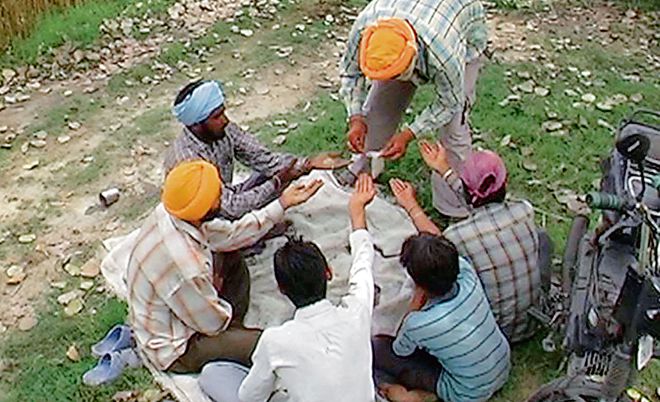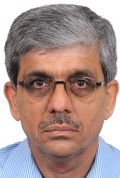
Dope spectre: The threat of drug annihilation of the youth is causing serious social upheaval in Punjab and is an assault on the state’s dynamic populace.
Suresh Kumar
Chief Principal Secretary to Punjab CM
Drug abuse has existed for a long time, but it was not as prominent an issue as it is now. The recent busting of a drug racket in the Sultanwind area of Amritsar, where over 188 kg of heroin and other drugs were seized shows how deep and serious the menace is.
The proliferation and intense abuse of opioids like heroin, opium, poppy husk and pharmaceuticals, including tramadol, buprenorphine, tapentadol, dextropropoxyphene, diphenoxylate, codeine-based syrups and the latest chitta — the synthetic drug — was neither reported nor discussed much in the state of Punjab. Traditional drugs, mainly bhukki (poppy husk), that were considered harmless, have since ceded space to many new harmful and habit-forming new psychoactive substances (NPS), of which synthetic opioids pose a greater threat to human lives. The common man is perplexed by the emergence of these drugs on Punjab’s horizon.
Drug abuse is primarily attributed to prosperity, but the pain of its receding and poverty revisiting some areas of Punjab are seemingly doing more damage to the younger generation. Disparity in riches and farmers’ distress also seem to be hurting society. Drug
infusion in Punjab is also attributed to our neighbouring country which is fighting a proxy war with India.
Geopolitical dimensions of the drug economy are difficult to deny. According to the United Nations Office on Drugs and Crime (UNODC) and the European crime-fighting agency, Europol, the global drugs trade is around $435 billion a year, with the annual cocaine trade being about $84 billion. Surely, India and Punjab will have their due share in it, though firm figures are not readily available. The UNODC, in its World Drug Report 2019, has identified some prominent routes of drug trade, namely, the Balkan route via Afghanistan and Turkey; the southern route from Afghanistan via Pakistan to South Asia or Africa; and the northern route through Central Asia to Russia and its federating states.
In Punjab, some indigenously cultivated drugs by the states such as Rajasthan and MP, where their cultivation is permitted, are also traded. It is, of course, a source of livelihood for many in those states. Punjab has been demanding a national drug policy that should regulate not only the local cultivation and trading but also the drug peddling and trafficking from across the borders, both land and sea.
There is widespread pain and anger in Punjab on drug abuse by the younger generation. People feel that they lost a generation to naxalism in the late sixties and early seventies, then faced a substantial loss of the younger population to terrorism in the eighties and early nineties and now the threat of drug annihilation of the youth, which is also termed as narco-terrorism, is causing serious social upheaval. This assault on the dynamic Punjabi populace at regular periodic intervals has done long-term damage to the state’s social fabric.
Constrained by such persistent discomfort, many of the peace-loving progressive Punjabis are dispatching their children to other countries, sometimes through illegal channels, even if it amounts to selling their land and other properties. The exodus of a substantial younger population in their productive age does not augur well for the state, and the governments and society should wake up to such a situation.
There is no reason for the governments to be lackadaisical in tackling the menace or denying its existence. They should pursue a comprehensively calibrated strategy that does not allow the drug czars to expand trafficking and, instead, ensures stern action against them.
Surely, some of the requisite physical infrastructure was created by building deaddiction and rehabilitation centres, but deaddiction treatment has remained inadequate and expensive. Addicts are socially shunned, and the guilty, particularly those alleged to be within the systems, are not as effectively chased as they should be.
The people of Punjab are eager to see exemplary punishment to the perpetrators of drug wounds to our society.
Drug economy is pulled by demand with rising abuse, addiction and profiteering by the drug czars. The reverse push to cut supplies and achieve drug extinction will involve strict enforcement of laws, deaddiction and rehabilitation of those affected, and prevention of new drug users through awareness and training.
This is the premise of the enforcement, de-addiction, prevention (EDP) strategy of Punjab that envisages integrated social, health and criminal justice responses to manage the demand and supply of drugs. It aims at strict enforcement of laws, deaddiction and prevention to check further abuse of drugs through education. The EDP strategy has shown some good results as a large number of peddlers, traffickers and users have been nabbed under the NDPS Act, which is quite stern but needs to be reformed to provide for a mandatory minimum punishment. The conviction rate of drug accused is 50 per cent in cases where commercial quantities are seized and about 60 per cent for non-commercial seizures. But the law enacted to confiscate property of drug peddlers, traffickers, and smugglers has not yet become operative.
Drug de-addiction treatment through outpatient opioid assisted treatment (OOAT) clinics puts greater thrust on outpatient treatment and permits wider access at a lower cost than the earlier mode of treatment that emphasised in-patient treatment and detoxification. It promotes harmonious reintegration into the society of addicts as an alternative to incarceration.
The OOAT programme, however, needs to be further strengthened with peer support and counselling mechanism, post-treatment exit strategy, and gender sensitivity of the treatment. It should also cover consequent diseases: HIV, hepatitis-C etc; emergency interventions and requisite arrangements for drug overdose and acute intoxication cases as also for jail inmates. If improved to home-based and self-help through mobile clinics, OOAT plan will help destigmatise the addicts, a fear which most affected families suffer from.
Education and training, including Drug Abuse Resistance Education (DARE), of the youth to not only make them more employable but also aware of the harmful effects of drugs is still at a nascent stage, and if made more intense, will also address the underlying reasons for drug abuse, such as illiteracy, unemployment and poverty.
The government’s enforcement efforts are more visible, though simultaneous action on the prevention and treatment of addicts will hasten achievements that people at large are expecting. The paradox of medical and non-medical use of pharmaceutical substances needs to be resolved. The rules and regulations of the Central and state governments require to be better synergised with greater cooperation amongst the states at the regional level; and, of course, a clear national policy on drug control and regulation should be promulgated.
Faults and loopholes in systems and individuals are better admitted as the target is to obliterate drugs, not users. The guilty should be punished, but with mandatory minimums and those who own it and make amends for the future to save the next generation, should be decriminalised instead of having them and their families suffer for long. It will instill confidence in society and can, perhaps, help reverse the processes that deepen the network of dope heads. This will, perhaps, enforce right-based balanced actions that are participatory, non-discriminatory, transparent and as per law to prevent and check drug abuse.
Join Whatsapp Channel of The Tribune for latest updates.




























